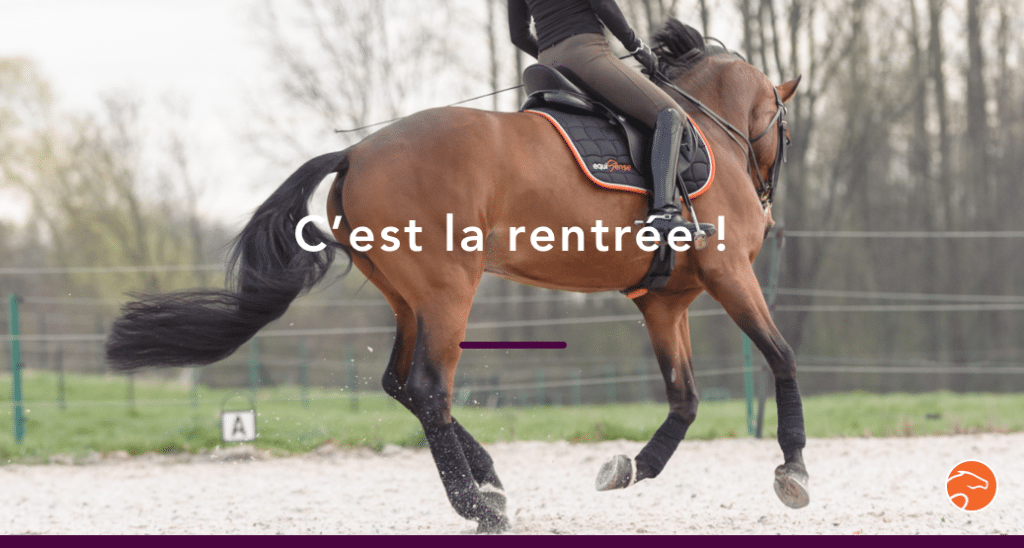A flying change is a change of canter lead in the air, for example: from a left canter lead to a right canter lead, or vice versa. This is not an easy exercise for all horses. Some don’t find it very natural, and can do it in the field, but not under saddle.
Start by introducing canter lead changes in your warm-up by using transitions (canter – trot – canter, canter – walk – canter) before moving on to flying changes. Flying changes require a lot of patience and obedience. Your horse mustn’t anticipate and must listen to your aids. When that is not the case, you need to teach him to be patient by doing exercises that show him that you control every stride. If your horse rushes in canter, make him work a little harder: for example, halt and rein back a few steps.
In order to introduce your horse to flying changes, you can start working on simple changes: canter – walk – canter. But before that, it is useful to practise on a circle. It helps to work on the transitions and helps your horse sit a little more on his hind quarters. Remember to aim for a very relaxed walk, almost an extended walk, to take the pressure off. Then, when you transition back into canter, remember to shorten your reins.
In practice, to ask for a flying change, all you have to do is reverse your aids. When cantering, you obviously don’t keep your outer leg backwards and the inside leg at the girth like in the canter depart. But you’ll need to place your leg aids that way again before the flying change to be able to clearly reverse them, and make it very clear for the horse.
To work effectively, remember to vary the exercises so that your horse does not expect the flying change. You can leg-yield for example, ride a circle… And once your horse « forgets about it, » you can start asking again.
A little tip: After working on flying changes, always check that your horse is still able to counter-canter. To counter-canter, as opposed to flying changes, remember to keep a bit of flexion on the side of the lead you’re cantering on. For example, when on the right canter lead, keep a flexion to the right and keep your left leg slightly back to make it clear to your horse. It is very important to teach your horse to be able to do both: flying changes and counter-canter.
To sum up, you have to plan your warm-up to prepare your horse for the flying changes. The warm-up is crucial for a flying change session. You have to start with canter – trot – canter transitions, then canter – walk – canter, then simple changes, and finally, flying changes. If your horse braces, take your time, switch to another exercise, do something different. Take your time to do this work over several sessions and reward your horse a lot!
Do you have difficulties with flying changes ? What do you think of this email ? Leave me a comment here. See you soon !

